Some people think that menu design templates are not that important. However, making a menu design for your restaurant requires considering many things.
It is more than making menu design templates or getting diners to visit your restaurant. Making menu design is about selling your menu as much as possible once the diners are all seated. This is why the menu design is important for the marketing plan for your restaurant.
Also, making a decent menu design will help you build brand recognition for your restaurant. When making the menu design, you cannot just make it well-designed. You must also make your menu easy to read and navigate, eye-catching, and unique.
If you prepare an easy-to-read menu with a plain and boring template, diners will lose interest and will not return to your restaurant again. You also need to make your menu well-organized so diners can see and decide easily what they want to eat.
This article will explain key considerations for effective menu design, why your menu design matters, Tips for a more engaging menu design, Essential elements, why different prices bring more people, how often you update the menu, and the common mistakes to avoid. So, let’s get started.
Key Considerations for Effective Menu Design
When running a restaurant, the menu is often the first point of contact between your brand and the customer. Below are some key considerations to keep in mind for effective menu design.
Concept Relevance
First and foremost, your menu should directly reflect your restaurant’s overall concept or theme. For example, if you run an upscale French restaurant, your menu should convey elegance and sophistication. It could be achieved through high-quality paper, classic fonts, and refined language. Conversely, a fast-food joint may use bold colors and straightforward language to align with a casual vibe.
Menu Availability
When it comes to the actual form of your menu, consider where and how it will be available. Different formats may be suitable for different situations:
- Small Print: Good for table menus or take-home brochures
- Online Version: Essential for your website or app
- Framed Version: Perfect for passersby, can be displayed outside the restaurant
Multiple formats ensure you can reach customers wherever they are in their dining journey.
Layout
The layout of your menu should be intuitive and well-structured. It means categorizing dishes in a way that makes sense—starters, mains, desserts, etc.—and perhaps even aligning them with your restaurant’s concept.
For instance, a health-focused cafe might categorize menu items based on dietary needs like vegan, gluten-free, and high-protein options.
Space for Descriptions
Leaving adequate space for dish descriptions is more than just a design choice; it enhances the customer experience. Detailed yet concise descriptions can help customers understand what each dish contains, making it easier to make an informed decision. It’s also an opportunity to upsell dishes by highlighting special ingredients or preparation methods.
Background Information
Take the chance to tell your restaurant’s story. It could be a small section at the back of the menu or even a foreword at the beginning.
Essential Details
Last, include essential details such as your restaurant’s business hours, address, website, and phone number. This information might seem basic, but it’s surprisingly easy to overlook. Plus, it adds a layer of convenience for your customers, potentially saving them a Google search.
Why Your Menu Design Matters
Understanding the psychological aspects can go a long way in turning a simple menu into a potent part of your restaurant’s success.
Psychological Aspects of Menu Design
Believe it or not, your menu’s design taps into your customers’ psychology. Elements such as color, typography, and layout can evoke certain emotions and reactions:
- Color Psychology: Different colors can trigger various emotional responses. For example, red is known to stimulate appetite, while blue tends to suppress it. Knowing how to use color effectively can establish the tone for the dining knowledge.
- Typography and Readability: Your font style and size can make your menu easy to read or a chore to decipher.
- Menu Sequencing: Studies have shown that people often remember the first and last items in a list better than those in the middle. Placing high-profit items at the beginning or end of a menu section can make them more memorable and likely to be ordered.
Impact on Customer Experience and Return Visits
Menu design can significantly enhance the customer experience. It starts with first impressions; an appealing menu can set the stage for the coming meal. A confusing or cluttered menu, on the other hand, can be frustrating and may lower expectations.
Role in Up-selling and Maximizing Revenue
The menu is an essential tool for up-selling. Strategic placement of items, enticing descriptions, and pairing suggestions (e.g., wine pairings with meals) can encourage customers to spend more than they initially intended.
For instance, using terms like “chef’s special” or “house favorite” can draw attention and make those items more appealing.
Tips for a More Engaging Menu Design
Creating a menu isn’t just about listing your restaurant’s dishes. It’s also about crafting an engaging and easy-to-navigate experience for your customers. Here are some tips that could make your menu more engaging and, in turn, more profitable.
Easy-to-Say Food Names
Some food names take a lot of work to say. Use numbers next to these foods. It makes it easy for people to order.
Different Prices
Put food with low and high prices on the menu. This way, everyone can find something they like and can afford.
Simple Foods
Remember to put easy foods like sandwiches and soups on the menu. These foods are quick to make, and most people like them.
Food for All
Have foods that are okay for people with special diets. For example, offer gluten-free or vegan foods. It makes more people want to eat at your place.
Get Help from Experts
If you need help with what to do, ask people who know much about making menus. They can give you good advice.
By using these tips, you make your menu better and your restaurant more popular.
Elements of Menu Design Templates
Understanding the key elements of a good menu design can benefit any restaurant owner. Here’s a breakdown of essential elements to consider when crafting your menu template:
- Header
It is the first thing customers see. Your restaurant’s name, logo, and perhaps a small catchphrase should be prominently displayed here.
- Introduction or Welcome Note
A brief message from the chef or owner can give a personal touch and set the tone for the meal.
- Table of Contents
For longer menus, a table of contents can make navigation easier. List the various sections like appetizers, main courses, and desserts here.
- Dish Names
Clear and easy-to-read dish names are essential. This section should be the focal point of the menu.
- Dish Descriptions
Descriptions should be concise but informative, mentioning key ingredients or cooking methods. It helps customers know what to expect and can tempt them into trying something new.
- Pricing
Indicate the price of each dish. Some menus opt to incorporate the price into the dish description in a subtle way.
- Icons
Use icons to denote vegetarian, spicy, or popular dishes. It helps customers make quicker decisions.
- Photos
While not necessary, high-quality photos of select dishes can make the menu more appealing. Be cautious; poor-quality photos can have the opposite effect.
- Sections and Dividers
Use these to separate different types of dishes and make the menu easier to scan.
- Footer
Here, you can include:
- The payment methods you accept.
- Social media handles.
- A thank-you note to your customers.
- Back Page
Some menus utilize the back page for promotional offers, upcoming events, or a brief restaurant history.
- Font and Typography
Choose fonts that are easy to read and align with your restaurant’s vibe. The typography should complement, not overpower, the menu content.
- Color Scheme
The colors should match your restaurant’s overall aesthetic. The right color can even stimulate appetite.
- Material and Texture
The material of the menu, whether it’s laminated paper or leather, contributes to the tactile experience of dining.
- Legal Requirements
Some places require calorie counts or allergen information to be listed on the menu. Make sure to comply with local laws.
Why Different Prices Bring More People to Your Restaurant
Having a menu with different prices helps bring more people to your restaurant. Here’s how:
Choices for Everyone
More people can find something they can pay for when you have food at many prices. Some might want a fancy dinner. Others might want a quick, cheap meal.
Special Days
Sometimes, people want to celebrate. They might be willing to pay more for special food. If your menu only has cheap options, these people might go elsewhere.
Everyday Dining
People who want a simple, less costly meal will also find what they like. They might visit your restaurant often, not just on special days.
Groups Welcome
If a group of people go out to eat, they may all have different budgets. A menu with many price options makes it easy for them to pick a place—like your restaurant!
By having a range of prices, you make your restaurant a place where everyone feels welcome. It is good for your business.
How Often Should You Update Menu?
The frequency you should update your restaurant menu depends on various factors. Here are some guidelines to help you decide:
Seasonal Changes
If your restaurant uses seasonal ingredients, consider updating the menu four times yearly to match each season.
Customer Feedback
Listen to what your customers are saying. If some dishes are unpopular, it might be time to take them off the menu.
Price Fluctuations
If the cost of ingredients goes up, you may need to update the prices on your menu. Monitor your food costs to decide if an update is necessary.
Business Goals
Are you trying to attract a new type of customer? A menu update could help you reach new people.
Local Events and Holidays
Special events or holidays can be a good reason to offer special dishes or menus.
Trends
Food trends change often. You should add a trendy dish to keep the menu fresh and exciting.
Review Periodically
Even if there’s no urgent reason, reviewing your menu at least once a year to see if it aligns with your business goals is good.
Free Menu Design Templates
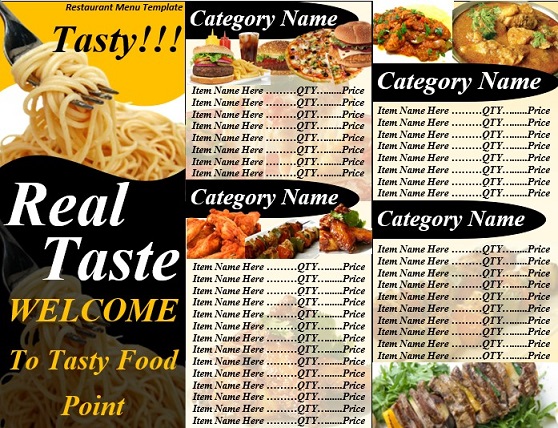
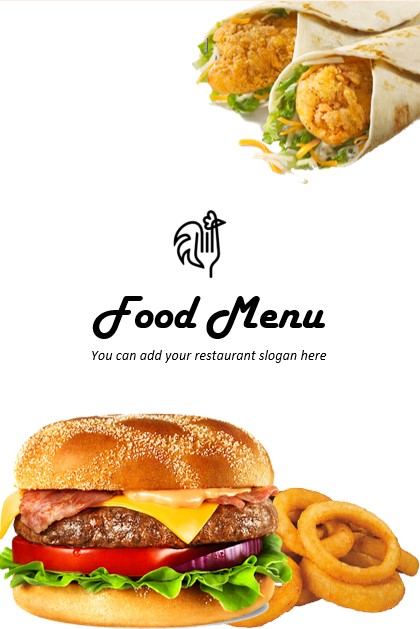
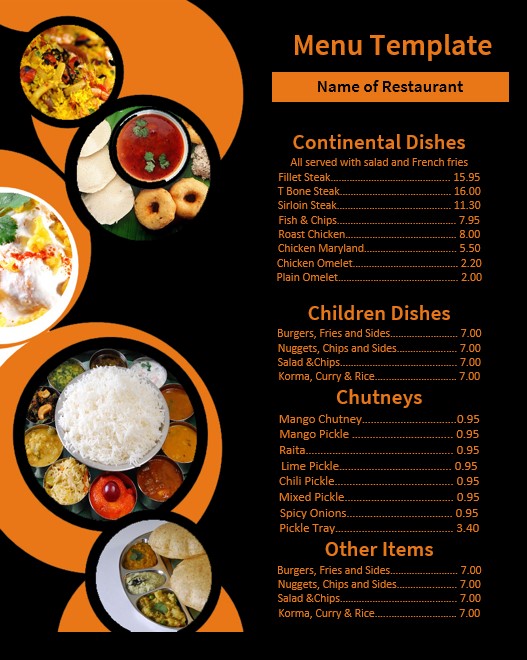
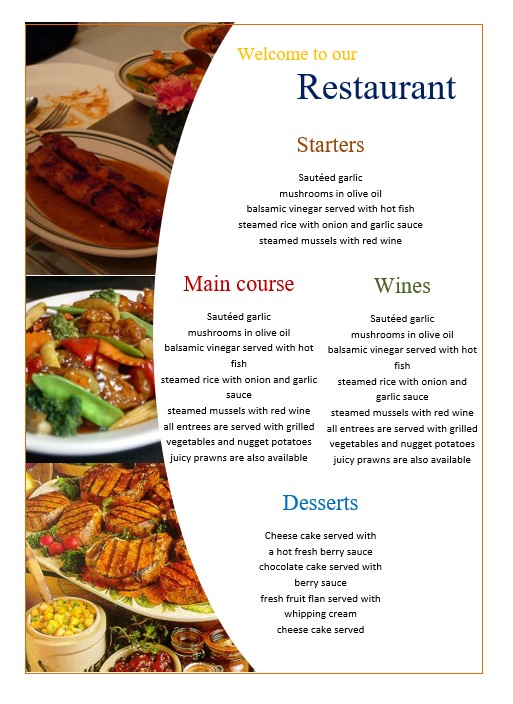
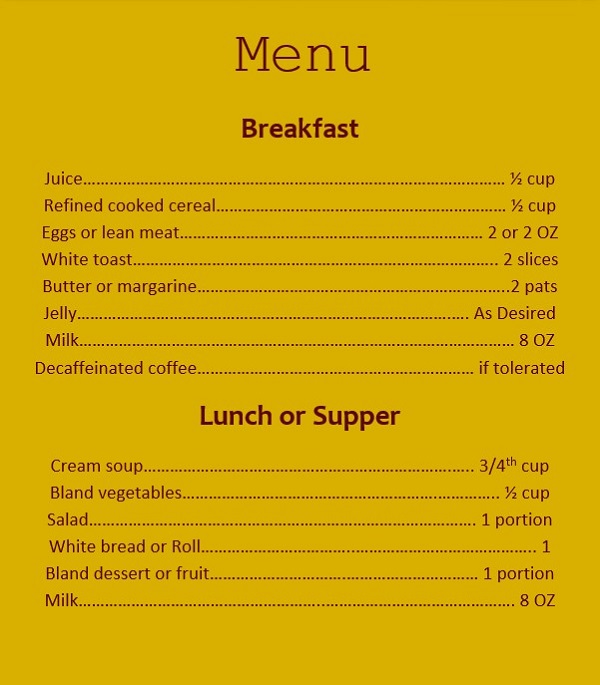
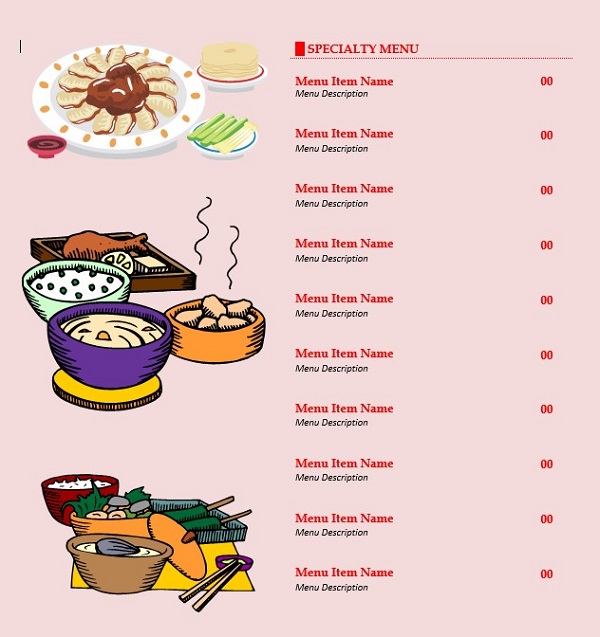
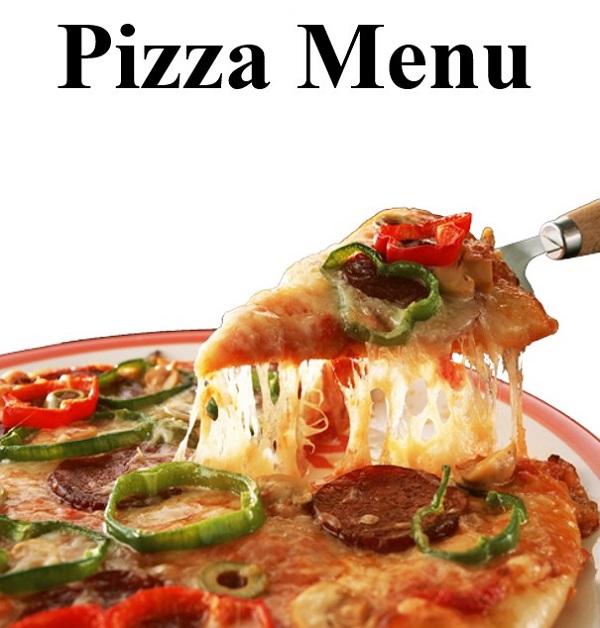
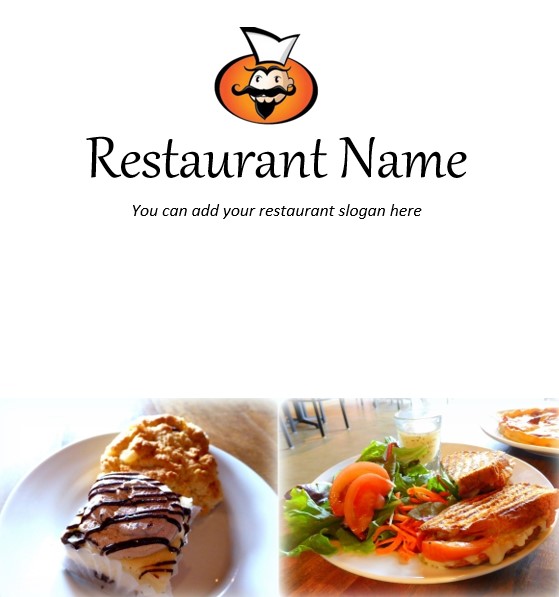
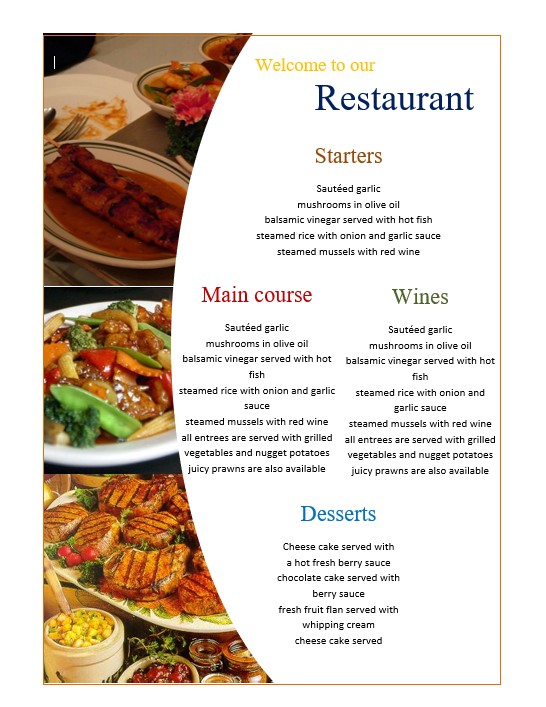
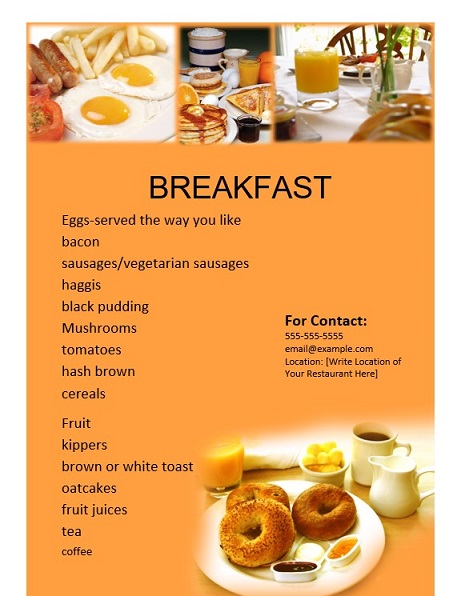
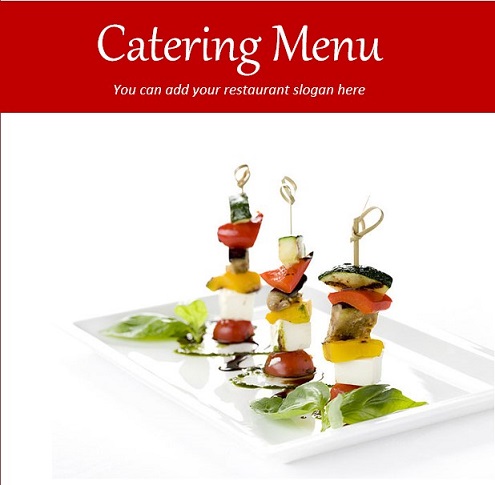
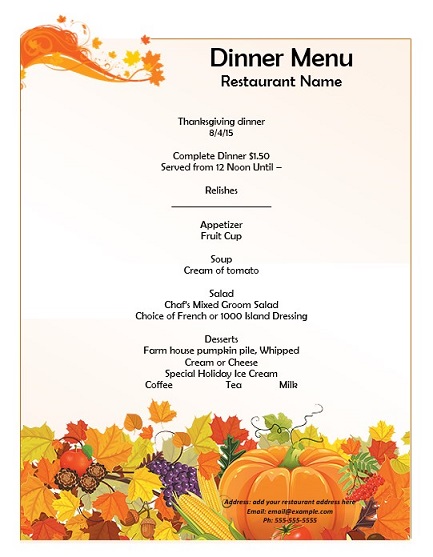
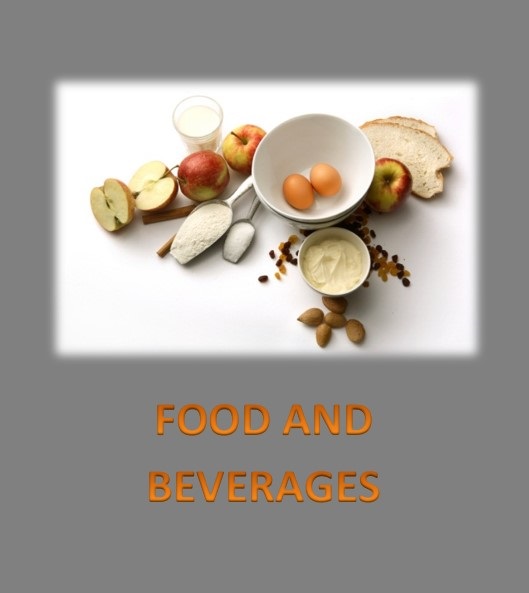
Common Menu Design Mistake
When designing a menu for your restaurant, there are several common pitfalls to avoid. Knowing these can help you create a more effective and appealing menu design templates.
Overcrowding
Packing too many items and descriptions on one page can make the menu look cluttered and overwhelm customers.
Poor Readability
Fancy fonts are a good idea, but can be hard to read. Stick to simple, clean fonts for easy readability.
Inconsistent Style
Mismatched fonts, colors, and images can make your menu look unprofessional. Make sure everything fits together in a cohesive design.
Ignoring the ‘Golden Triangle
Research shows that people’s eyes naturally go to the top-right corner first, then to the top-left and down the middle. Important items should be placed in these areas.
Lack of Food Descriptions
Customers want to know what they’re ordering. Include brief but enticing descriptions of each dish.
Missing Photos or Poor-Quality Photos
While too many photos can clutter a menu, strategic, high-quality pictures can boost sales.
Ignoring Price Points
Not offering a range of price options can alienate customers with different budgets. Make sure to have a diverse menu that caters to various price points.
Overusing Culinary Jargon
While it might sound fancy, more culinary jargon is needed to ensure customers understand.
Not Considering the Layout
How the menu is organized can make a big difference. Grouping similar items and using boxes or highlights for special dishes can make the menu easier to navigate.
Neglecting to Update
Menus should be reviewed and updated regularly to remove unpopular items, adjust for seasonal availability, and refresh the design.
Conclusion
Those are the explanation of menu design templates, key considerations for effective menu design, why your menu design matters, Tips for a more engaging menu design, Essential elements, why different prices bring more people, how often you update the menu, and the common mistakes to avoid. Good luck in making them!
FAQs
Why is numbering important for difficult-to-pronounce dishes?
Numbering allows customers to order dishes more easily and without the fear of mispronunciation. It enhances the customer’s comfort level and overall experience.
Why include basic items like sandwiches and soups?
Basic items like sandwiches and soups are familiar to most people and offer a safe choice for those who may not be adventurous eaters. They also usually have quicker preparation times, helping your kitchen during busy periods.
Is it necessary to cater to special diets?
While not mandatory, sensitivity to special diets can make your restaurant more inclusive and inviting. It can also help you build a loyal customer base among those who have specific dietary needs.
Do I need to consult experts for menu design?
While you may have a good idea of what you want, consulting experts adds a layer of professionalism and effectiveness to your menu. Graphic designers can help with layout and color schemes, and industry veterans can offer valuable insights into what works and what doesn’t.
How does a well-designed menu enhance customer experience?
A well-designed menu helps customers make their food choices more easily, which adds to a positive dining experience. It can also contribute to your brand’s identity and help with up-selling items.
What are the essential details to include in a menu?
Remember to include practical details like your business hours, address, website, and phone number. These elements may seem small, but they are crucial for new or out-of-town customers to learn about your restaurant for the first time.
Why is it important to leave space for dish descriptions?
Descriptions give customers a better idea of what to expect and can help them make a more informed choice. It’s also an opportunity to highlight the special ingredients or preparation methods that make your dishes unique.
Should the menu design align with the restaurant’s overall concept?
Absolutely. Your menu is an extension of your restaurant’s brand and should reflect its overall concept and style.

The content creator team at calipsotree.com is dedicated to making topics accessible to everyone, with over 9 years of experience in writing and breaking down complex concepts into easy-to-understand articles that answer readers’ financial questions.








